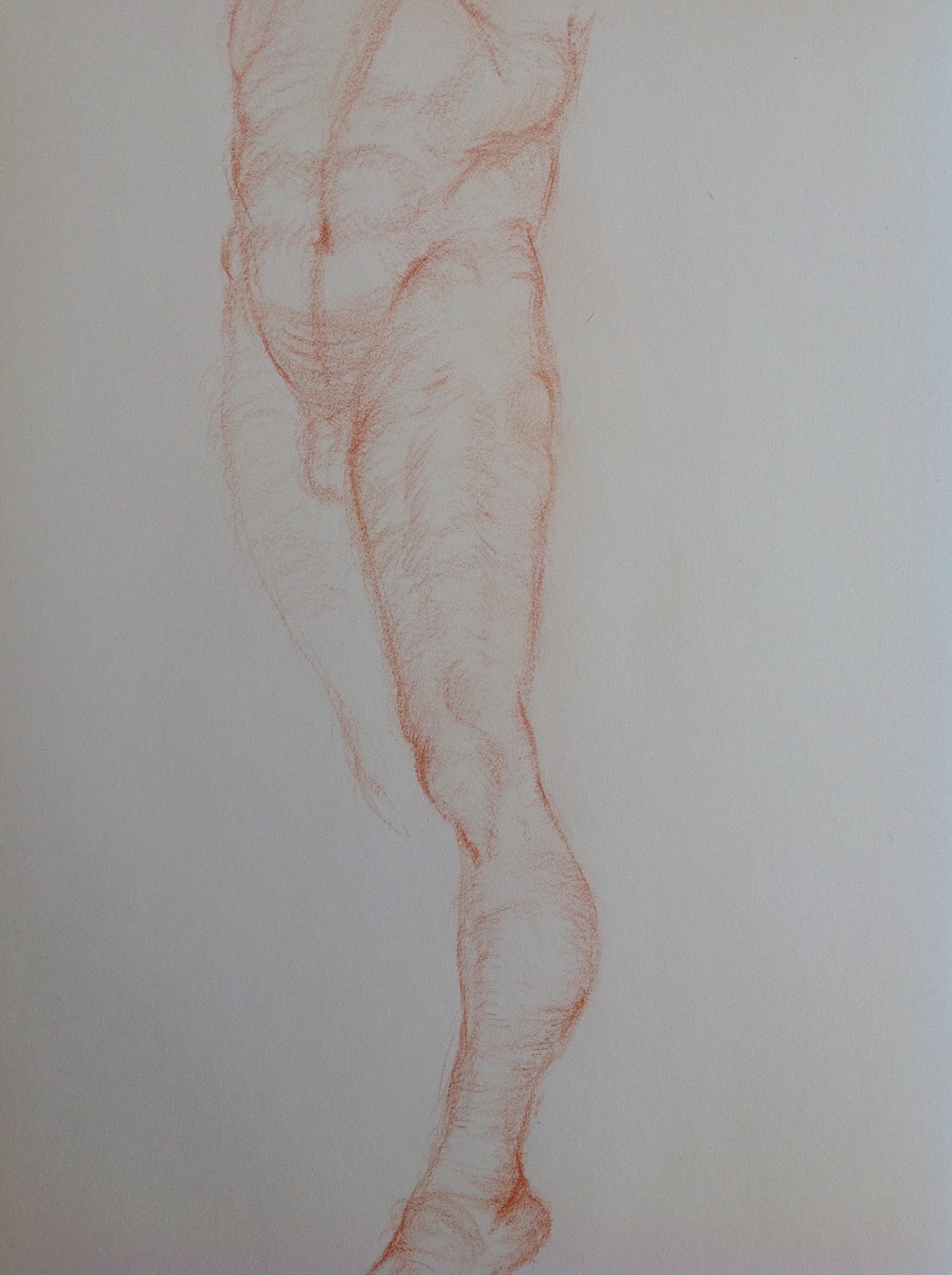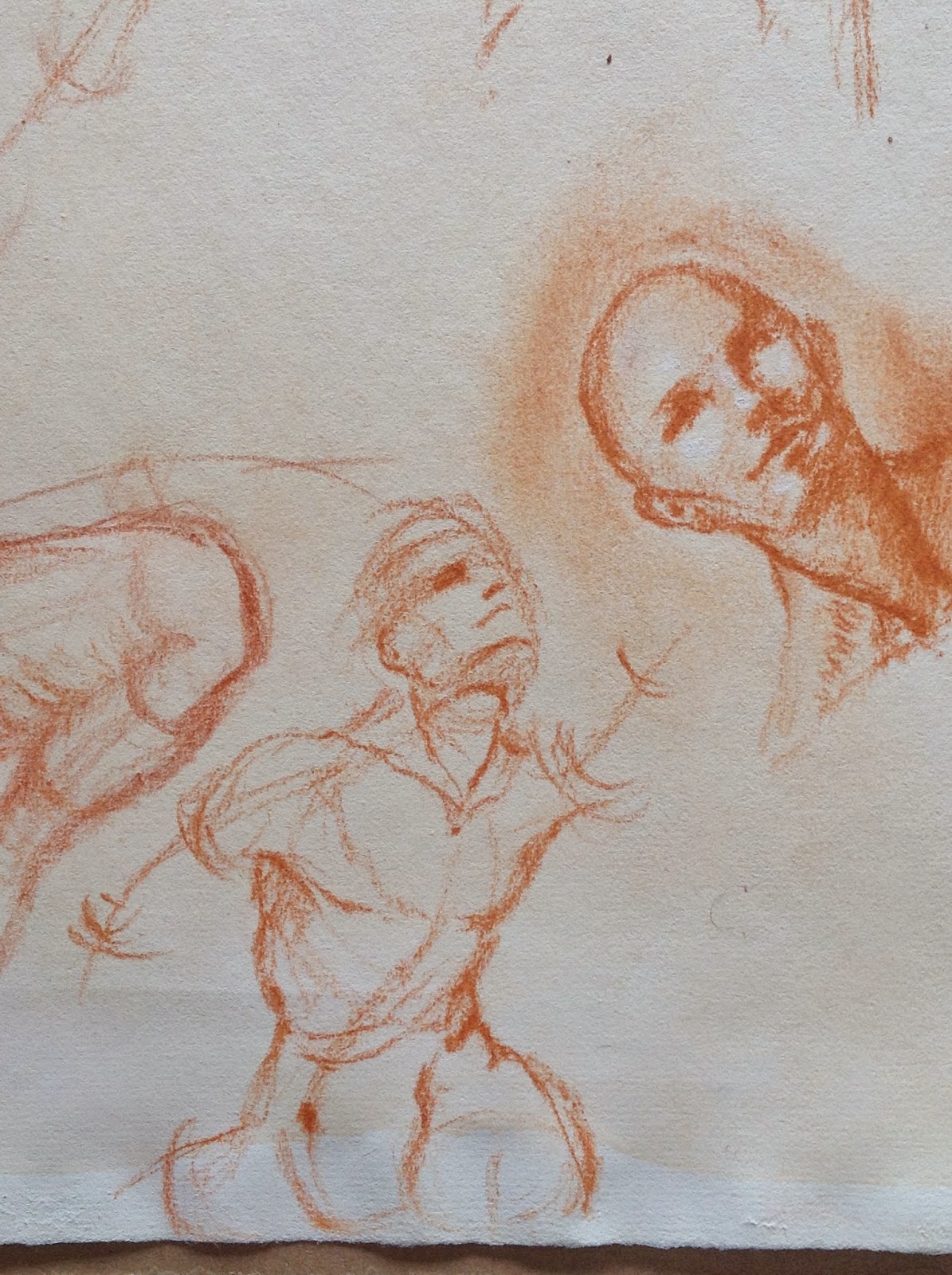 |
| Michael Whynot. Figure Study. Red chalk. |
The range of beauty and expressiveness possible within the attitude of the human figure never fails to leave me with a sense of wonder. The flesh is the veil through which we glimpse the soul.
Is it any wonder that the figure has been the focus of art since we first began to draw?
The drawing above began with a few quick gesture lines. I had a simple twist of the torso in mind when I set down with my drawing pad. I began to explore the figure on the paper, changing the gesture lines for the neck, arms and legs. The range of possibilities was nearly endless.
An hour later, I had this expressive figure on the page, the head lolling against the shoulder, knee thrusting forward, arms spread wide.
A person could spend a lifetime exploring all the possibilities of the figure and, I dare say, it would not be a life wasted.










